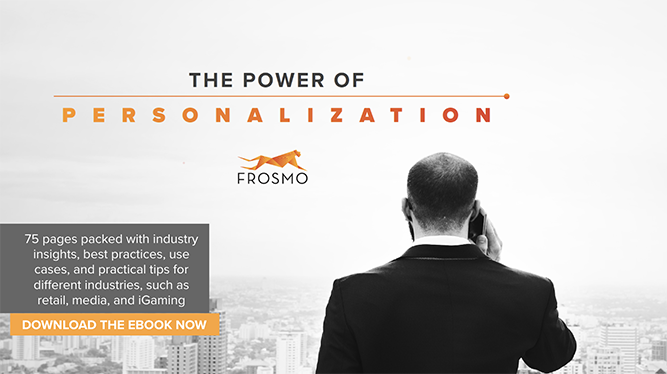Getting the best out of personalization

Personalization is not an easy journey. And despite its strong business case, positive results, and years of experimentation to further enhance its capabilities, the opportunities for effective personalization strategies remain largely untapped. Because for every success story, there are dozens of weak efforts or failed attempts.
74% of consumers get frustrated when they see website content that has nothing to do with their interests.
Kibo
With customer expectations for personalization and hyper-customization constantly evolving, it’s time for businesses to keep up. But the question is – how? Here are some questions you can start with to have what it takes to win the personalization game.
Is it relevant and compelling?
A good personalization revolves around relevancy and remarkability. It’s all about providing a richer experience by serving the right message on the right channel at the right time. According to an Accenture study, 44% of all customers feel that brands fail to deliver relevant personalized experiences.
If you’re going to suggest a product, get it right. Whether you’re using a recommendation tool or manually selecting the product you’re suggesting, ensure that the recommendations are relevant and appropriate. If the suggested product isn’t what they’re interested in, you have the risk of losing not only a potential upsell but also the customer’s trust in your capability to connect with them.
Is it too much?
While taking personalization to a whole new level sounds promising, it’s crucial not to let it go too far. There’s a thin line between delivering useful recommendations and those that raise a red flag on privacy concerns. When you cross that line, it will be hard to get the trust back. Your customers should feel recognized and understood, not stalked. So, identify the customers personally, but use their data without being too creepy nor invasive. Strong brands are based on trust.
Personalization is not the experience. It’s how you curate meaningful experiences.
ACCENTURE
Is it repetitive and annoying?
Showing the same offers again and again, even when they’re relevant, will eventually tire customers and drive them away. There are retargeting ads and campaign messaging that chase customers all over the page. Personalization aims to engage customers in an authentic and remarkable way that recognizes them and serves their needs.
Though it might be tempting to over-communicate promotions and recommend multitudes of products, remember that less is more. Keep the frequency down as spamming will make customers feel harassed and regret the decision to give you their information. Most customers appreciate a lot less personalization than most marketers believe. Suggest products they love and encourage more engagement quicker and easier with well-crafted campaign messages carefully selected just for them.
Bottom line
Businesses are now expected to deliver perfectly curated customer experiences. It’s not easy to create messages and offers that feel truly personal and relevant to potential customers, but when personalization is done right, it becomes a very powerful marketing tool with many benefits to both customers and businesses.
It’s also important not to violate customer trust when implementing personalization strategies. Data may be one of the factors in enabling personalized experiences but transparency and trust are key elements in customer loyalty.
Two-way conversations when interacting with customers allow the brands to effectively listen to the customers. By doing this, customers have the power in their hands to let brands know what they truly want and when they want it. These continuous two-way digital dialogues result in significantly better and more personalized customer experiences for every individual.
Are you ready to start your personalization journey?
